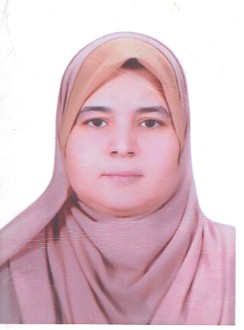Introduction: Infection with Helicobacter pylori is accepted as a main cause
of gastritis and gastritis-associated diseases. Giardia lamblia parasite is considered the most common protozoal infection in human. Concomitant H.
pylori and Giardia infection is common for their similar mode of transmission and strong correlation to socioeconomic levels, but only few
reports had described gastric giardiasis. In this work, H. pylori and Giardia
lamblia were detected by PCR in gastric antral mucosal biopsies from a
random sample of patients complaining from dyspepsia, in Sohag niversity
Hospital, Egypt. Results were compared with a control group of patients
undergoing EGD for other reasons rather than dyspepsia. The impact of H.
pylori and Giardia lamblia infection whether singularly or concert, on clinical, endoscopic or histopathogical changes was studied. Patients and
methods: 48 patients (26 males and 22 females) with dyspepsia and 28
controls (26 males and 2 females), were subjected to esophagogastroduodenoscopy (EGD). Endoscopic data were reported and
gastric biopsy specimens were obtained for subsequent PCR assay for H.
pylori and Giardia lamblia, histopathological and electron microscopic examination. Results: Endoscopic antral gastritis and duodenal lesions ere
found in both patients and controls. Both lesions occurred significantly ore
frequently in patients group (p= 0.002 & 0.0005 respectively). Esophageal
lesions, nodular antral gastritis, gastric ulcers and superficial corpal gastritis
were found only in patients group. PCR detected H. pylori infection in 28 out of the 48 patients (about 58%) and in 18 out of 28 (64%) control subjects while Giardia lamblia infection was present in 32 out of 48 patients (67%) compared to 12 out of 28 controls (64%). In the latter, the results were statistically significant (P=0.0003, Odd ratio~2.6). Co-infection with H.
pylori and Giardia was present in 33% of patients compared to 36% of controls. Abnormal histologic findings were found in both patients and control groups, however, gastric atrophy occurred significantly more frequently in symptomatizing patients (P=0.027) with an odd ratio = 2.6.
Intestinal metaplasia was found only in the patients group. Electron microscopic study; cellular abnormalities in the form of cytoplasmic
vacuoles, mitochondria! destruction or nuclear abnormalities were found in
infected subjects (H.pylori, Giardia or both). Conclusion: H. pylori is not the only gastric pathogen in our community, gastric giardiasis is quite common.
Its contribution to symptoms or pathological changes couldn't be confirmed
in our study but it might be a factor in persistent epigastric pain after H.
pylori eradication.

